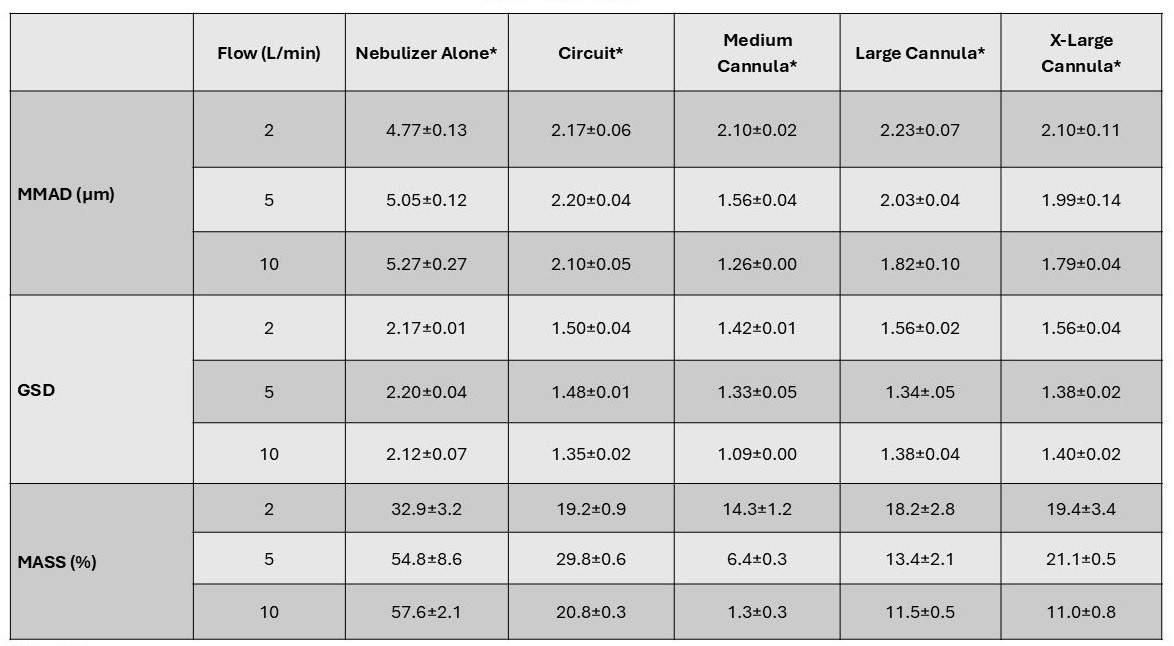Critical Care 3
Session: Critical Care 3
486 - Characterization of Nebulized Albuterol Delivered Via a High Flow Nasal Cannula System
Monday, April 28, 2025
7:00am - 9:15am HST
Publication Number: 486.4513
Ariel Berlinski, University of Arkansas for Med, Little Rock, AR, United States

Ariel Berlinski, MD (he/him/his)
Professor of Pediatrics
University of Arkansas for Med
Little Rock, Arkansas, United States
Presenting Author(s)
Background: High flow nasal cannula (HFNC) systems are a treatment modality widely used for respiratory support in neonatal-pediatric population. Inhaled aerosols are frequently prescribed in these patients. The practice of delivery aerosols through HFNC systems, while off label, is widespread. However, the characteristics of the aerosols released by cannulas have not been well characterized. We hypothesized that increasing the flow of air and decreasing the size of the nasal cannula will result in a decrease of particle size of the aerosol and the amount of drug delivered.
Objective: To characterize aerosols generated by HFNC systems.
Design/Methods: Albuterol solution (2.5 mg/3ml) was loaded into 3 new vibrating mesh nebulizers connected to the inlet of a heater/humidifier device with heated-wired circuit connected to different size nasal cannulas (Medium, Large, and X-Large). The heater/humidifier was operated at 2, 5, and 10 L/min. A cooled Next Generation cascade Impactor (NGI) calibrated at 15 L/min was connected to the aerosol sources (Nebulizer alone, circuit, and cannula). Aerosol captured by the NGI was dissolve in distilled water and quantified via spectrophotometer (276 nm). The aerosols were characterized by the mass median aerodynamic diameter (MMAD), Geometric Standard Deviation (GSD), and total mass captured by NGI expressed as % of loading dose (MASS). Tests were done in triplicate.
Results: Aerosols released by the circuit and cannulas were smaller, less heterodispersed, and had lower MASS than those released by the nebulizer alone (Table 1). These changes were greater with smaller size cannulas and higher HFNC flows.
Conclusion(s): Aerosol characteristics of nebulizer significantly changed when connected to HFNC systems. A significant aerosol MASS and size reduction occurred when traveling through the circuit and the cannulas. Similar behavior occurred when HFNC system flows were increased. The reported changes in aerosol characteristics could potentially alter the site of lung deposition.
Table 1: Results
 * Mean±SD
* Mean±SD
